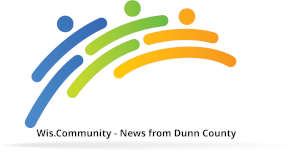
Wisconsin Report Card Provides Info on Progress, Problems
By
Senator Kathleen Vinehout
“My son’s grades improved at report card time,” Mari told me. Her son struggled in school for many years. “We had a great teacher conference. He got mostly Bs and Cs – which was an improvement.”
Wisconsin recently got its own report card. Our state also got mostly Bs and Cs. Although in several cases, these scores represent benchmarks that are not improving.
The report published by the Wisconsin Taxpayers Alliance (WISTAX) tracks statistics reflecting the economy, education and quality of life in Wisconsin.
Our focus on education has historically been a great strength of our state. The report card reviewed education through “workforce readiness” and assigned Bs for all benchmarks measured – the only category to receive this consistent high mark.
More students graduate from high school in Wisconsin than any other Midwest state but Iowa. On national tests (NAEP), our students score better in math than every surrounding state but Minnesota. Wisconsin’s average ACT score beat every surrounding state but Minnesota.
Although Wisconsin’s K-12 students perform better than the national average, we lag the US average, and Minnesota and Illinois, in the number of people over age 25 with a bachelor’s degree. We need more people with a college degree.
Higher education improves income. Wisconsin also has an income problem.
The report card gave a D+ to Wisconsin’s average earnings. Wisconsin’s average earnings have been at least 10% behind the US average in 26 of 32 years between 1983 and 2014. We also lag the US per capita income. All neighboring states have higher per capita income.
Wisconsin also has a job growth problem. WISTAX reports a meager 1% growth per year since 2011. The five-year job growth is less than the national average and any surrounding state.
Traditionally, Wisconsin’s unemployment rate tracks about two percentage points below the national rate. Over the past few years that gap has narrowed. The recent Bureau of Labor Statistics September numbers showed Wisconsin’s unemployment rate less than a percentage point below the US average. Less people are filing for unemployment but job growth is anemic.
Measures of quality of life in the WISTAX report card include those without health insurance, safety as measured by violent crime and poverty.
Wisconsin has traditionally led the Midwest in those covered with insurance. Recently, Minnesota and Iowa edged out Wisconsin in health insurance coverage. The 2015 report card pegged the number of those uninsured at a hair over 9% of Wisconsinites.
The violent crime rate in Wisconsin has generally been steady over the past twenty years. Although our neighbor to the west, Minnesota, has both a historically lower rate and more success in sending that low rate even lower.
Fewer Wisconsinites own homes in 2014 than in even 2013. The roughly two-thirds of Wisconsin residents that own homes is better than the national average but lower than every surrounding state except Illinois.
Poverty has been rising in Wisconsin over the past fifteen years. WISTAX used the federal definition of poverty. For example, in 2014 a family of four with an annual income of $23,850 was at the poverty threshold. About 11% of Wisconsin residents earned less than the poverty threshold in 2013. As a percent of the population, Wisconsin has more residents below the poverty threshold than Minnesota and Iowa but fewer than Illinois or Michigan.
The report card covered several other measures but space limits us.
The WISTAX study isn’t nearly as easy to read or understand progress as your child or grandchild’s report card. The measures have changed over the years and letter grades have replaced an earlier “pass/fail” or “plus/minus” system.
Other factors make historical comparisons difficult. For example, when all students take the ACT college entrance exam, Wisconsin’s numbers are sure to drop.
Value can be achieved, however, in pausing to compare. Using benchmarks – both historical and across states – help us reflect on our progress and our continued challenges.
There is a lot of room for improvement in Wisconsin’s report card. Jobs, increasing wages and the number of college graduates are all on the list of challenges.
